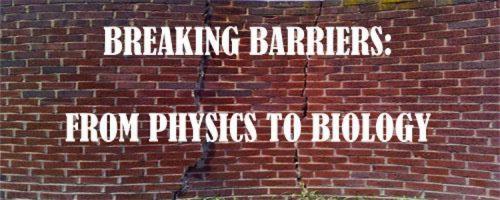"Breaking Barriers": celebrating the life of Albert Libchaber
Saturday, January 2nd, 2010
To celebrate and renew that connection, a scientific meeting "Breaking Barriers: from Physics to Biology" has been jointly organized by NCBS and ICTS (International Centre for Theoretical Sciences), serving as a satellite meeting of the ICTS inaugural event. The list of speakers includes members of Albert's laboratory, as well as scientists with a close association to Albert. With conceptual discussions as well as formal and semi-formal presentations, the meeting will provide a platform for rekindling old relations. It will also help to initiate collaboration between scientists whose focus ranges over a diverse number of questions spanning the physical and biological sciences, inspired in part by Albert.
"The legacy of Albert is both scientific and human", describes a colleague, who studies the physics of complex systems. "Albert has led a whole cadre of scientists, first into chaos and nonlinear dynamics, through the first steps in pattern formation and into turbulence, and then boldly into biology, at a time when he and only one or two other physicists had ventured in this direction. The subsequent meteoric development of these fields is thus due largely to him".
What role did Albert Libchaber play in the scientific lives of those who worked in his laboratory? To piece together glimpses of the man, his past collaborators were asked to describe Albert. The one common refrain among all Albert's "heirs" is that what he has taught them is "much deeper and much beyond science itself". "There is rarely anything obvious to Albert. He has taught [scientists] to explore every possible direction in looking at a given problem, never to be satisfied with 'standard answers', and always to continually question and probe the 'obvious'. It is this intellectual process that leads to real understanding and, occasionally, truly new physical insights". As one colleague points out, it was with "contagious passion and continuous encouragement that [Albert] inspired [his] exploration into the biological world", motivating him " to ask physicist's 'why' questions and find 'principles' behind the vast diversity and complexity of the biological world".
From personal anecdotes among his associates, one finds that Albert influenced not just a "taste in science, [but of] red wine" , the classics like Turing, Schrodinger and Delbruck and "the utter importance of being unserious". A colleague and close friend of the group notes that "Thirty years ago Albert Libchaber and Jean Maurer performed their now famous experiment on the Rayleigh-Bernard convection in a small box of liquid helium". He adds that "For us this experiment is a great achievement not only because of its scientific importance for the field of non-linear dynamics and chaos. It also illustrates how beauty and simplicity can emerge in seemingly complex (messy) phenomena", and is an inspiration for scientists to cross the barrier from physics to "give us hope that someday similarly beautiful and profound results will emerge in biology".
The meeting "Breaking Barriers: from Physics to Biology" therefore celebrates the science of Albert Libchaber, the man who has "an unflagging active interest in any fundamental question that endeavors to unravel the mysteries of the world around us" through the scientific paths of those on whom he has left an indelible mark.

Comments
Albert Libchaber
Albert J Libchaber's lab
Post new comment